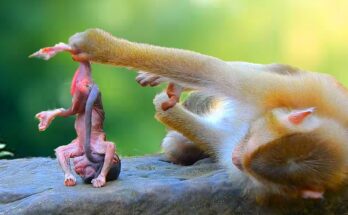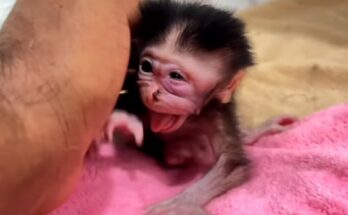n the sun-scorched plains of the African savannah, the circle of life plays out in raw, unfiltered moments—some powerful, others painful to witness. One such moment unfolded under the golden glare of the afternoon sun. A lioness, lean and hungry, had caught a fragile baby gazelle that had strayed too far from its mother.
The baby gazelle cried out softly, its legs trembling, its eyes wide with fear. But there was no escape. The lioness, driven by instinct and necessity, began to feed. There was no mercy, only survival. Each bite was a reminder of nature’s brutal reality—the constant balance between predator and prey.
Nearby, the lioness’s sisters lounged in the tall grass, watching silently. They did not interfere. They had hunted and eaten earlier; now it was her turn. This was not cruelty—it was a shared understanding, a rhythm older than time. The strong must feed to stay strong.
Just a short distance away, a herd of wildebeest stood still, their eyes fixed on the scene. They were too far to help, yet close enough to feel the weight of loss. They did not run—they knew the hunt was not for them today. They bore silent witness, as they had countless times before.
Though heartbreaking, this moment is part of the natural order. The lioness did not kill for sport or malice—she did so to survive, to nourish herself and perhaps later, her cubs. For the gazelle, its end came swiftly, if not peacefully.
This haunting scene, while difficult to watch, reflects the raw and often harsh reality of life in the wild. It reminds us that nature is not kind or cruel—it is simply true to itself.


